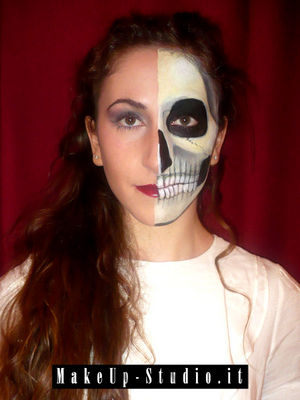Day: guide
Ideas for carnival 2012: fatal beauty !
by Stefano on Jan.30, 2012, during Body Painting, Events, Make Up
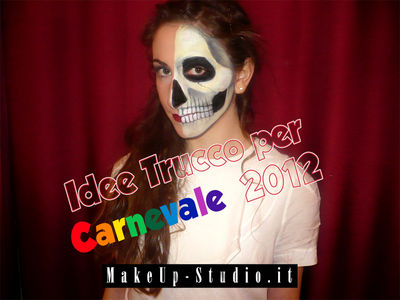
Here is a proposal to make up for Carnival: fatal beauty!
As you can see from the photos, it's a trick asymmetric, where the right side of the face was made up with make-up rather marked beuaty, accentuating the light and shade of makeup on the eyelids and under the cheekbones, I realized while on the left face-painting of a skull with colored water.
Before you begin face painting, I covered the eyebrow with soap, to do it then disappeared under makeup.
To draw the skull I was inspired by a couple of pictures downloaded from the Internet (specifically from wikipedia, that).
The realization of face painting:
With the black color and a thin brush I have updated the guidelines that define eye, nose, mandible and maxilla, and the various teeth, helping with the feel and trying to follow the underlying bone.
Then I mixed white, yellow and a touch of black, for the typical color of the bones, preferring a shade a little’ darker, so that we can build on later, and chiaroscuro shadings.
I colored with white teeth, and nose, eye and the inner side of the square jaw with black, I also used to mark the boundary face.
Finally I created using the black shades and a big brush and almost dry, bringing into the dark inner points and using the white to create fake reflections (For example, on the forehead, cheekbone and the center of the nose) in the most obvious; and I added some detail with the brush nice and simple (a crack on the nose and under the eye).
How to create a fake nose for theatrical use latex
by Stefano on Oct.12, 2011, during Special Effects, Events
Here are step by step illustrated instructions on how I made the noses for a few characters of the Palio of Pomarance.
Since this is a play which did not require the likely make-up make-up film, and being the nose part of the face little flexible and deformable, I thought it was not necessary to use latex foam to achieve this type of prosthesis, but could also work well on liquid latex precured.
The first step in the realization of the prosthesis was then the study design (the whole show was created and developed around a comic) and the creation of the model.
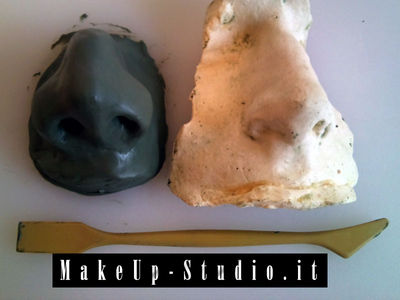 |
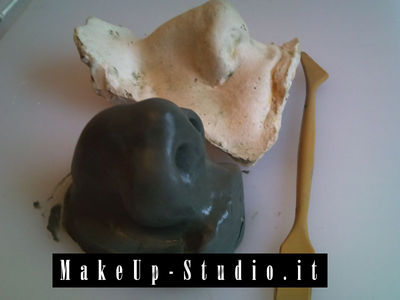 |
Even with the positive provision of a nose (my! 🙂 ) plaster work on, and that I used as reference for the size, for convenience I made a table of all PVC (my kitchen cutting board).
After the modeling phase of the clay (Here I used the very common Pongo) and recreated a thin orange peel to simulate the effect of the skin, I used the cutout of the base of a bottle to surround the model and create a containment for the casting, as well suited in size, and then I poured the plaster to get the impression.
At this stage it is important to ensure that small air bubbles inevitably present in the water / gypsum leave, thus avoiding that create imperfections to the mold. To do this, fully paid after the plaster into the mold, just beat vigorously on the basis of which it supported the model, creating vibrations.
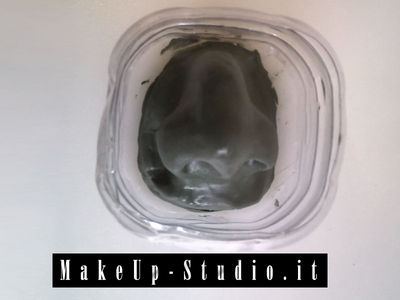 |
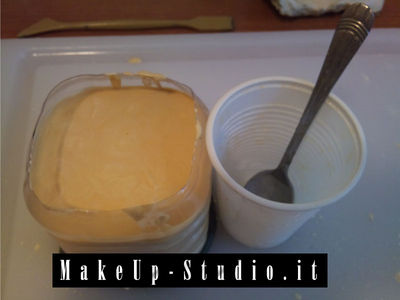 |
Obtained the mold and removing the model pose, which will leave the imprint 'clean', you can proceed to the first molding.
To do this you must pay a minimum amount of liquid latex mold inside, and then moving the same to make the latex go to cover only the areas concerned, preventing or oozing from the mold is at the bottom.
The mold should be left to air dry (if you want you can speed up the processs with a hair dryer) and at the end all be exposed to the latex powdered with talcum powder or neutral boron-. This will prevent the latex from sticking to itself during the extraction.
Generally a single layer of latex is very thin and is not sufficient to ensure that the prosthesis has achieved the required consistency, to make it more rigid, you can create other levels following the first, but left margins after 'climbing’ the distance 1/2 mm from the edge of the previously created, to ensure that the edges, remaining thinner, risultimo invisible once pasted.
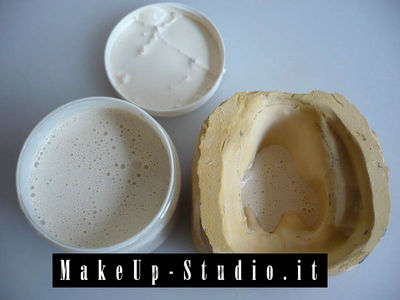 |
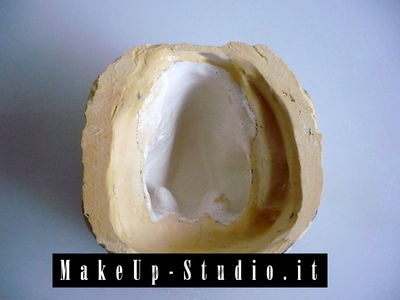 |
Once you reach the desired thickness, powder for remembering everything well, you can proceed, by lifting a corner of the latex and shoved under a brush full of talcum powder, to pull the nose of the mold.
What should be done by becoming aware that the objectivity achieved not fold on itself, sticking beyond repair.
Below is presented as a separate noses from the plaster, ready to be applied and colored.
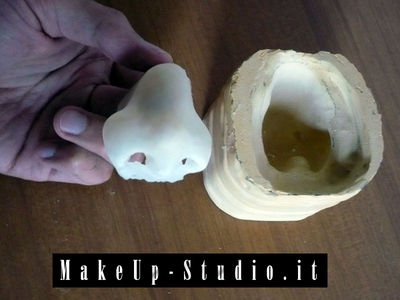 |
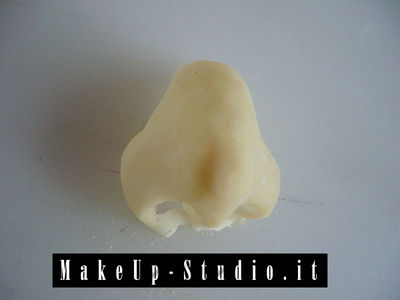 |
